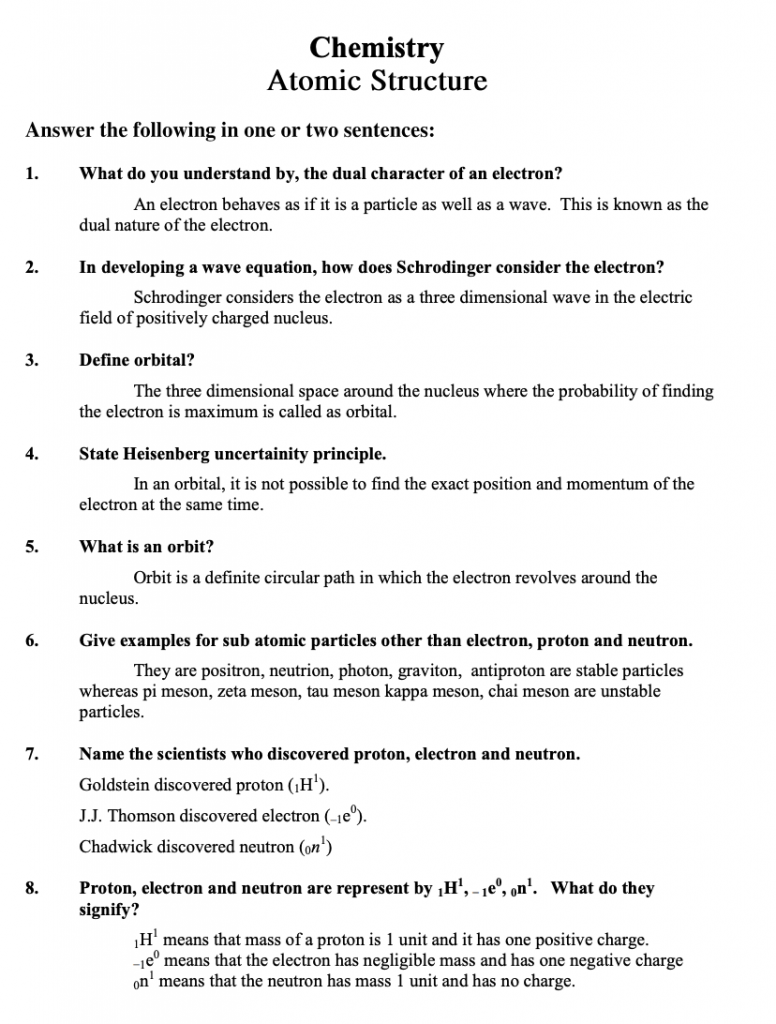Atomic Structure Brief Questions and Answers
Summary:
In chemistry, the concept of the dual character of an electron is discussed, where it exhibits properties of both a particle and a wave. Schrodinger’s wave equation describes the electron as a three-dimensional wave within the electric field of a positively charged nucleus. The three-dimensional space around the nucleus with the highest probability of finding an electron is known as an orbital. Heisenberg’s uncertainty principle states that the exact position and momentum of an electron in an orbital cannot be simultaneously determined. Other subatomic particles, such as positrons, neutrinos, photons, gravitons, antiprotons, and various mesons, are also mentioned. The discovery of protons, electrons, and neutrons by Goldstein, J.J. Thomson, and Chadwick is noted, along with their respective symbols and significance. Principal quantum numbers describe the energy levels of electrons in an atom, with values like n=1, n=2, n=3, and n=4 representing different electron shells. The maximum number of electrons in each shell can be determined using the formula 2n^2. Different subshells (s, p, d, f) are associated with specific values of the principal and azimuthal quantum numbers. Magnetic quantum numbers describe the orientation of subshells, and the number of orientations depends on the type of subshell (e.g., three orientations for p subshell). The (n + l) rule explains the orbital filling order, and Hund’s rule states that electrons prefer to occupy different orbitals before pairing up. The oxidation and reduction processes in chemical reactions are defined, along with examples. Oxidation numbers, such as those in KMnO4 and KClO3, can be calculated to determine the oxidation states of specific elements. The concepts of energy levels, quantum numbers, and electron configuration for elements like aluminium are also covered.
Excerpt:
Atomic Structure Brief Questions and Answers
1. What do you understand by, the dual character of an electron?
An electron behaves as if it is a particle and a wave. This is known as the dual nature of the electron.
2. In developing a wave equation, how does Schrodinger consider the electron?
Schrodinger considers the electron as a three-dimensional wave in the electric field of a positively charged nucleus.


Reviews